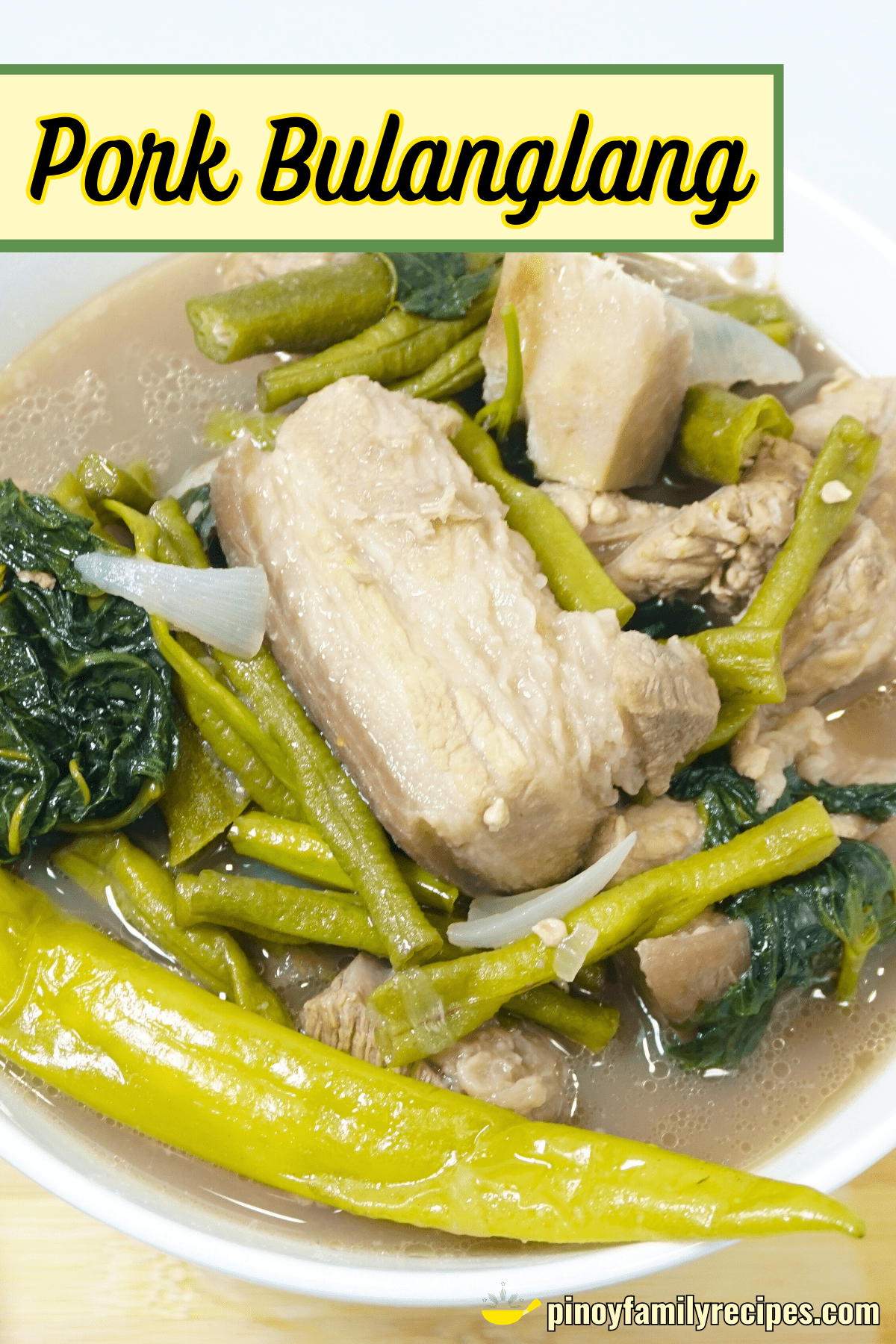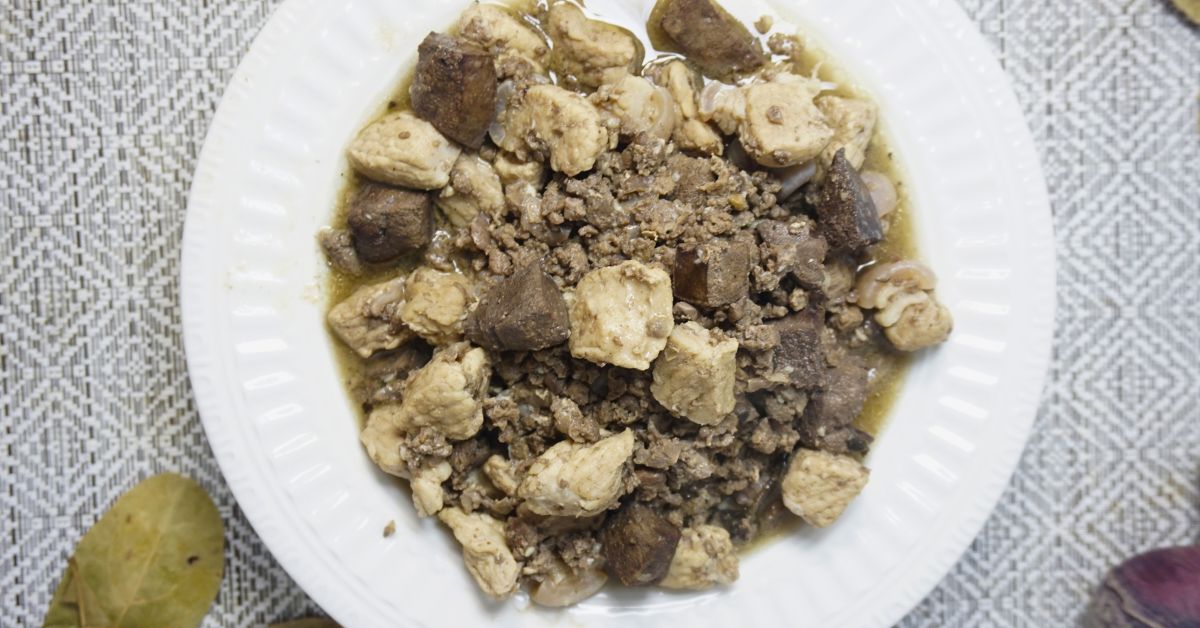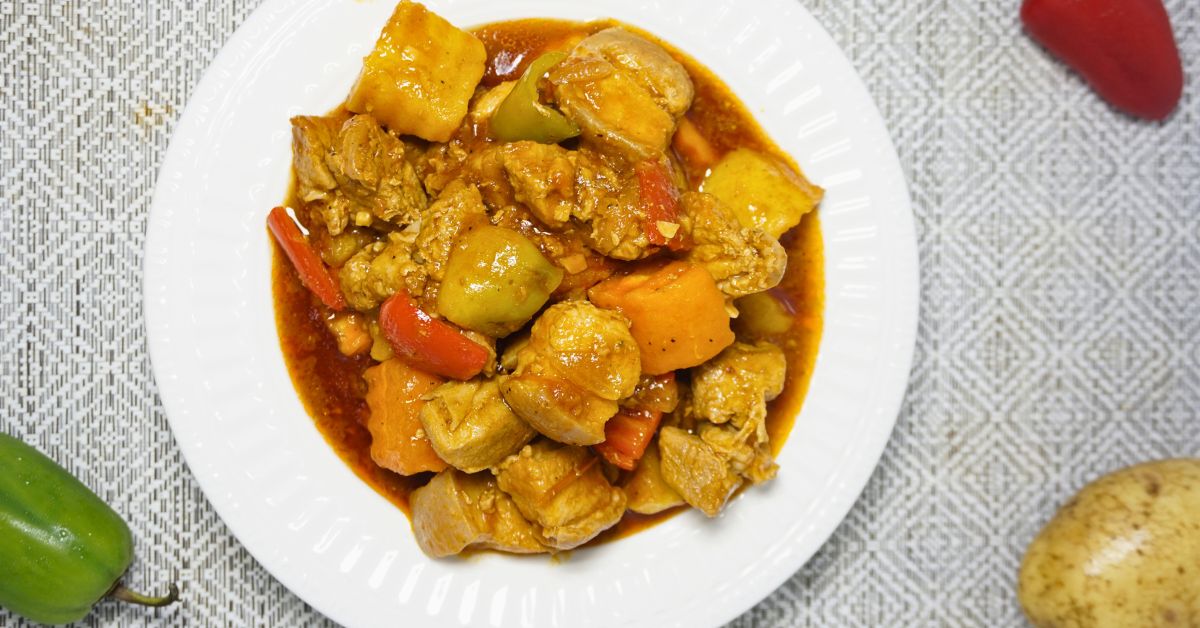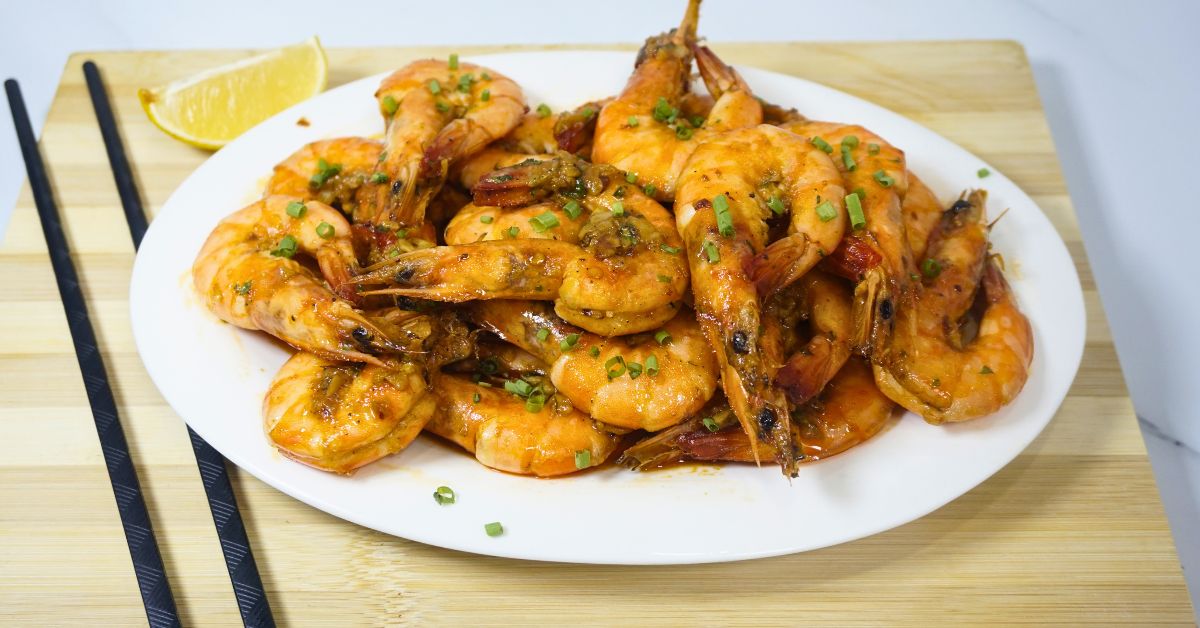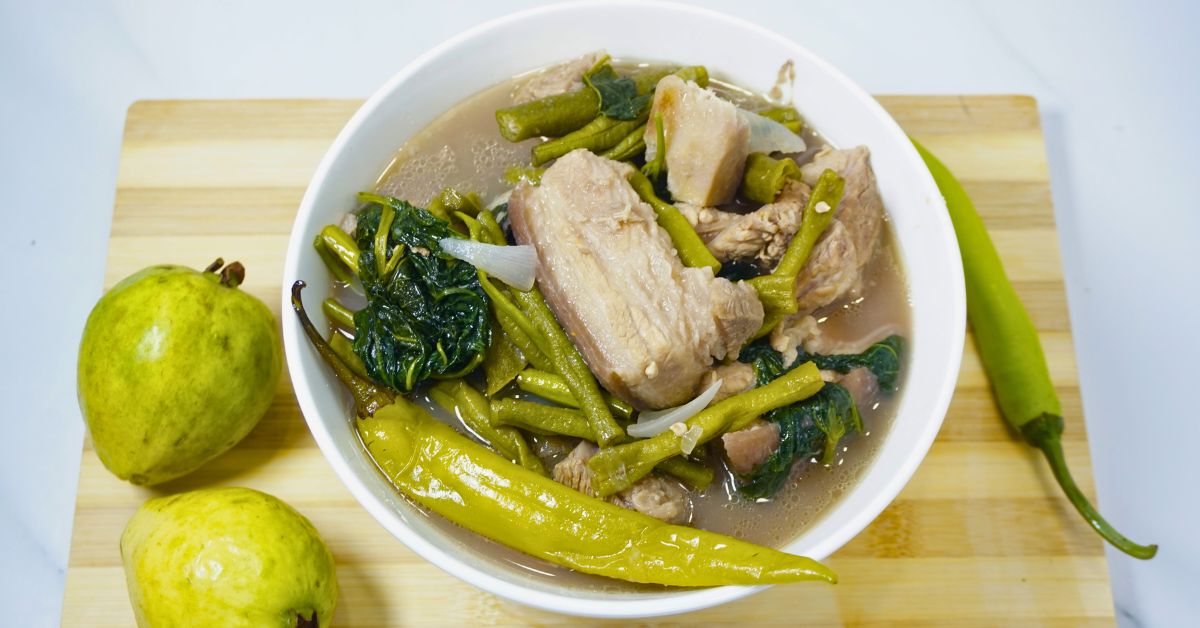
If you’ve ever searched for a bulanglang recipe online, chances are you’ll come across a few different versions. As of now, you might see Panlasang Pinoy’s take on the Batangas-style bulanglang popping up.
But here, I’ll share with you our Kapampangan version of bulanglang. Think of it like sinigang na baboy, but instead of the usual tamarind, we’ll be using sweet, ripe guava to give it that unique fruity twist. Imagine tender pork simmered in a broth that’s both savory and slightly sweet, with that guava adding a soft, natural sweetness. It’s the kind of soup that warms you up, with flavors that remind you of home and comfort.
Trust me, just the aroma of this soup will make you hungry! As it simmers, the scent of the ripe guava blends with the pork and veggies, making your kitchen smell like a comforting Kapampangan feast. Every spoonful has that mix of tender pork, fresh vegetables, and the slight sweetness of guava that makes the broth rich but still light. It’s the kind of dish you’ll want to serve your family, especially on days when you need something hearty and satisfying.
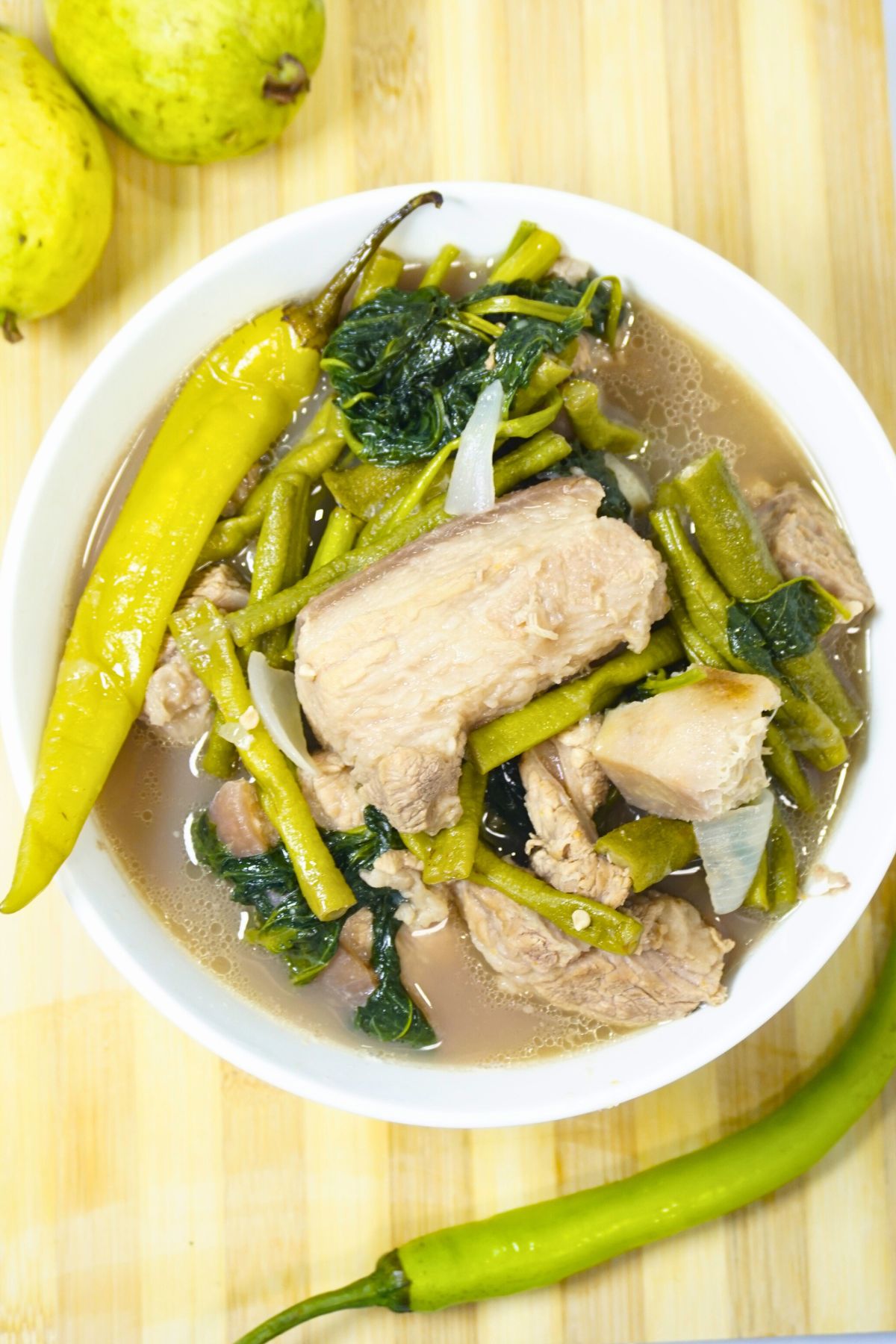
So, what is Bulanglang?
As I’ve mentioned, there are a lot of versions of bulanglang, depending on what province you’re from.
But here in Pampanga, we often call this Bulanglang sa Bayabas, where, as the name suggests, we use guava to give the soup its signature sweet flavor. The ripe guava adds a light, fruity sweetness to the broth that perfectly complements the savory taste of the pork and fresh vegetables. It’s a simple dish, but the combination of flavors makes it special. This Kapampangan version is all about balancing sweetness and savoriness in one warm, comforting bowl.
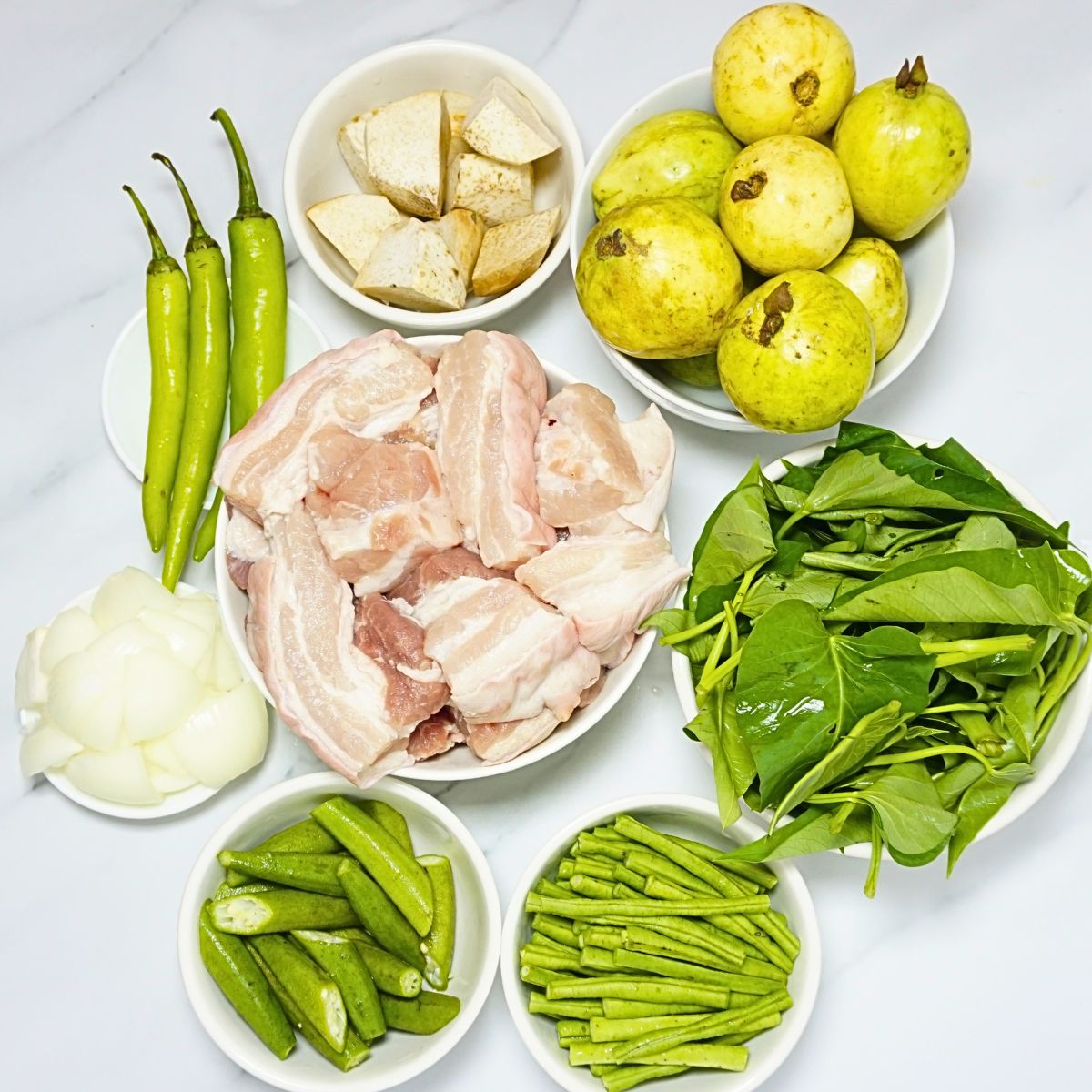
Pork Bulanglang Kapampangan Ingredients
Ripe Guava and Sugar (optional): The ripe guava gives the broth a natural sweetness and fruity flavor that makes this bulanglang unique. The sugar is optional, but it enhances the sweetness if you prefer a slightly sweeter taste.
Pork Belly: Tender and juicy, the pork belly adds rich, savory flavor to the broth, making the dish hearty and satisfying.
Gabi (Taro): Taro thickens the broth as it softens, adding a creamy texture that blends well with the other ingredients.
Snake Beans and Okra: These fresh vegetables add a nice crunch and balance to the dish, bringing both texture and nutrition.
Green Chilies: These give the soup a mild kick of heat, enhancing the overall flavor without overpowering the dish.
Fish Sauce and Salt: These seasonings bring out the savory depth in the broth, tying all the flavors together.
Kangkong Leaves: Light and earthy, these leafy greens add freshness and a pop of color to the dish, rounding out the flavor.
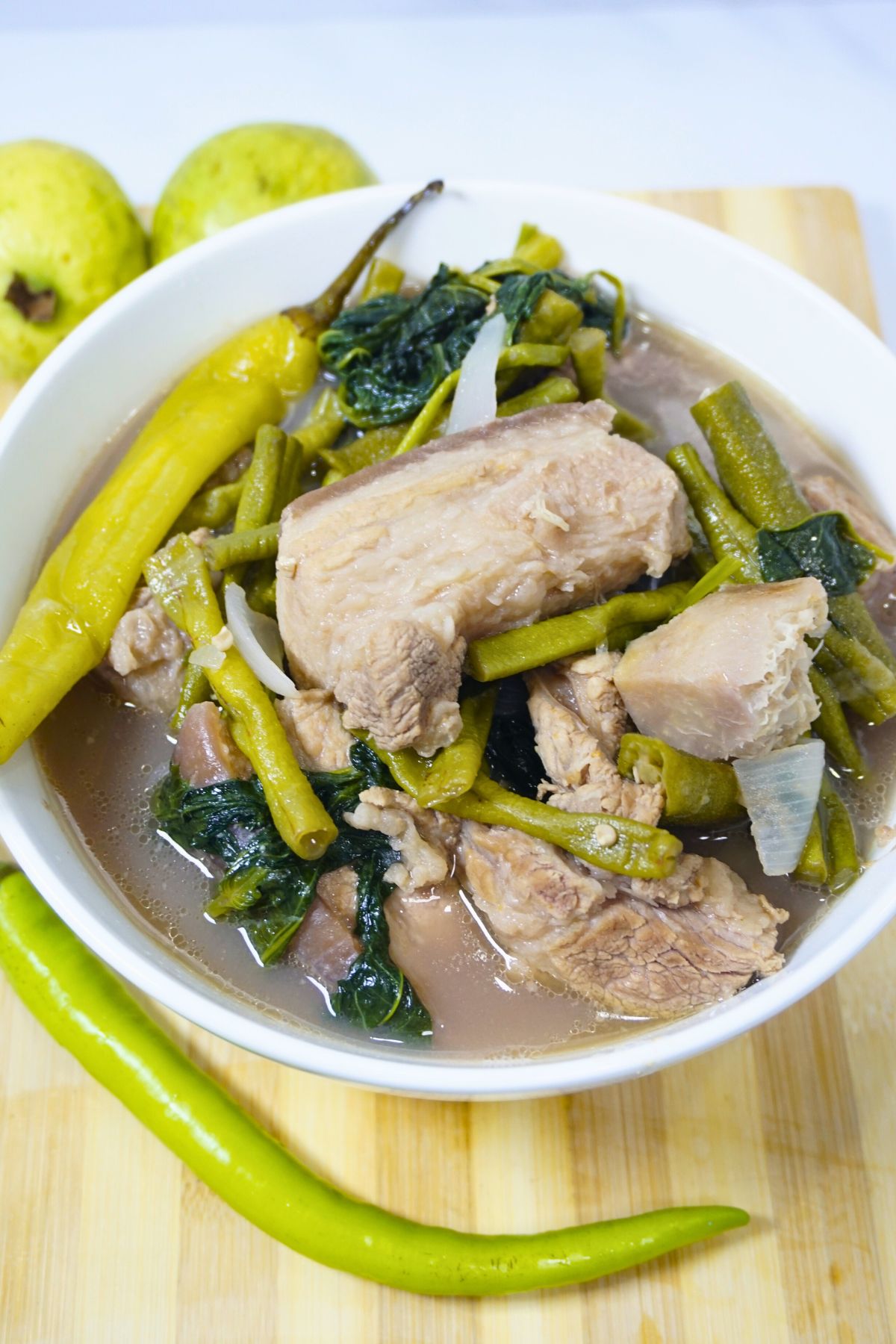
How To Cook Pork Bulanglang
Boil the Guava
Start by boiling about 1.5 liters of water in a large pot. Once the water is boiling, add your peeled ripe guavas. Let them simmer until they’re soft. After that, take out the guavas from the pot, mash them in a bowl, and then strain the mixture to get the guava juice. This juice is what gives the soup that nice fruity flavor. Set the juice aside for now.
Cook the Pork Belly
In the same pot where you boiled the guavas, add the pork belly and let it cook until it’s tender. While it’s boiling, skim off any foam or scum that comes to the surface to keep the broth clear.
Add the Guava Juice and Gabi
Once your pork is nice and tender, pour the strained guava juice back into the pot. Then, add your gabi (taro). Let this simmer for a few minutes so the gabi can start softening and thickening the soup a bit.
Add the Vegetables
Next, toss in your snake beans, okra, and green chilies. Let them cook for a few minutes until they’re almost done but still have that slight crunch.
Season the Broth
Now, season the soup by adding fish sauce and, if you want, a bit of sugar for extra sweetness. Taste the broth, and if you feel like it needs more flavor, add a little salt to balance everything out.
Stir in the Kangkong
Finally, add your kangkong leaves to the pot. These cook quickly, so just let them simmer for a few more minutes until they’re tender.
Serve and Enjoy
Once everything’s cooked, serve the bulanglang hot with a side of rice. The savory pork, sweet guava broth, and fresh vegetables make this a dish that’s both light and filling.
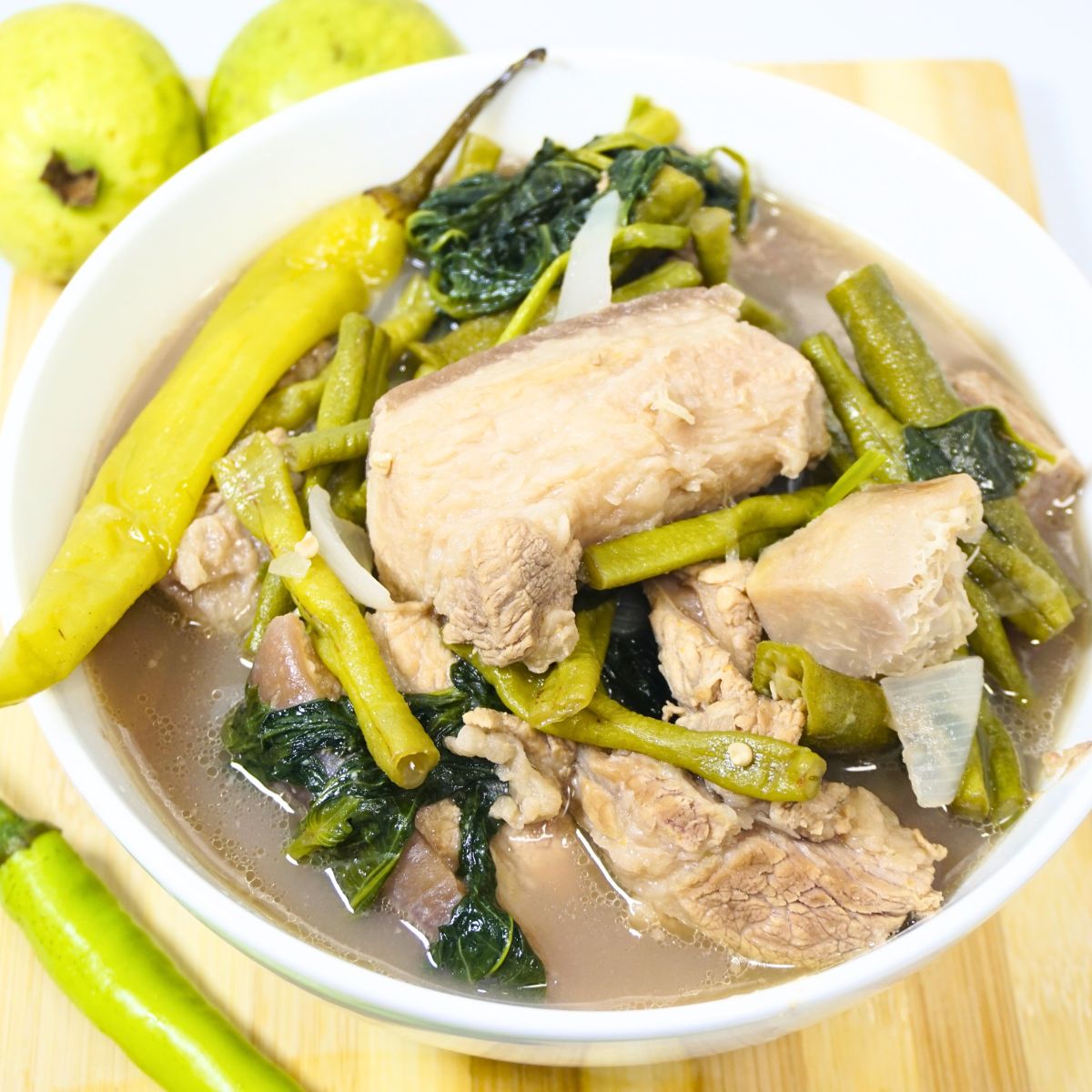
Tips in Cooking Bulanglang
- Choose Ripe Guavas – Make sure your guavas are fully ripe because the sweetness and flavor come from the ripeness. Unripe guavas can make the broth taste a bit bland. If your guava isn’t as sweet as you’d like, that’s where a little sugar can help balance it out.
- Simmer the Pork Until Tender – Don’t rush cooking the pork belly. Let it simmer slowly until it’s really tender. This gives the broth more flavor, and no one likes tough pork in their soup, right?
- Mash and Strain the Guava Well – When you mash and strain the guava, try to get as much juice out as possible. This is the key to giving the broth that signature fruity taste. Don’t skip the straining step to avoid having too much pulp in the soup.
- Add the Vegetables Last – To keep the vegetables fresh and slightly crunchy, add them toward the end of cooking. Overcooked veggies can turn mushy and lose their vibrant colors.
- Adjust the Salt and Fish Sauce – Taste the broth before serving. Sometimes, the sweetness of the guava can overpower the dish, so adding a bit more fish sauce or salt can bring balance.
- Serve Immediately – Bulanglang is best enjoyed hot and fresh. If it sits too long, the vegetables can get soggy, and the flavors might change. So serve it as soon as everything is perfectly cooked!
Frequently Asked Questions
You can, but it won’t give the same sweetness. If using unripe guava, you might want to add a bit more sugar to balance the flavor.
Bulanglang can last up to 2-3 days in the fridge, but it’s best enjoyed fresh. Just be aware that the vegetables may get mushy when reheated.
Yes, you can substitute pork with fish or shrimp for a lighter version. Just adjust the cooking time, as seafood cooks faster than pork.
Not exactly. Bulanglang uses guava for sweetness, while sinigang typically uses tamarind for sourness, giving each dish a distinct flavor.

Pork Bulanglang
Ingredients
- 1.5 liters Water
- 1 kilogram Guava (ripe)
- 1 kilogram Pork Belly (cut into serving pieces)
- 4 pieces Gabi / Taro (quartered)
- 1 bunch Snake Beans (cut into pieces)
- 1 bunch Okra
- 3 pieces Green Chilies
- 2 tablespoons Fish Sauce
- 2 tablespoons Sugar (optional)
- Salt to taste
- 2 bunches Kangkong Leaves
Instructions
- In a large pot, bring 1.5 liters of water to a boil. Add the 1 kilogram of peeled ripe guava and simmer until they are soft. Once tender, remove the guava from the pot, mash them in a bowl, and strain the mixture to extract the juice. Set the strained guava juice aside.
- In the same pot, add 1 kilogram of pork belly and let it boil until tender. Skim off any scum that rises to the surface.
- Once the pork is tender, pour back the strained guava juice into the pot. Add 4 pieces of peeled gabi (taro) and let it simmer for a few minutes until the gabi starts to soften.
- Add 1 bunch of snake beans (sitaw), 1 bunch of okra, and 3 green chilies to the pot. Let it simmer until the vegetables are almost cooked.
- Add 2 tablespoons of fish sauce and 2 tablespoons of sugar (optional, adjust to taste). Taste the broth and add salt if needed.
- Finally, stir in 2 bunches of kangkong leaves and simmer for a few more minutes until the vegetables are tender.


